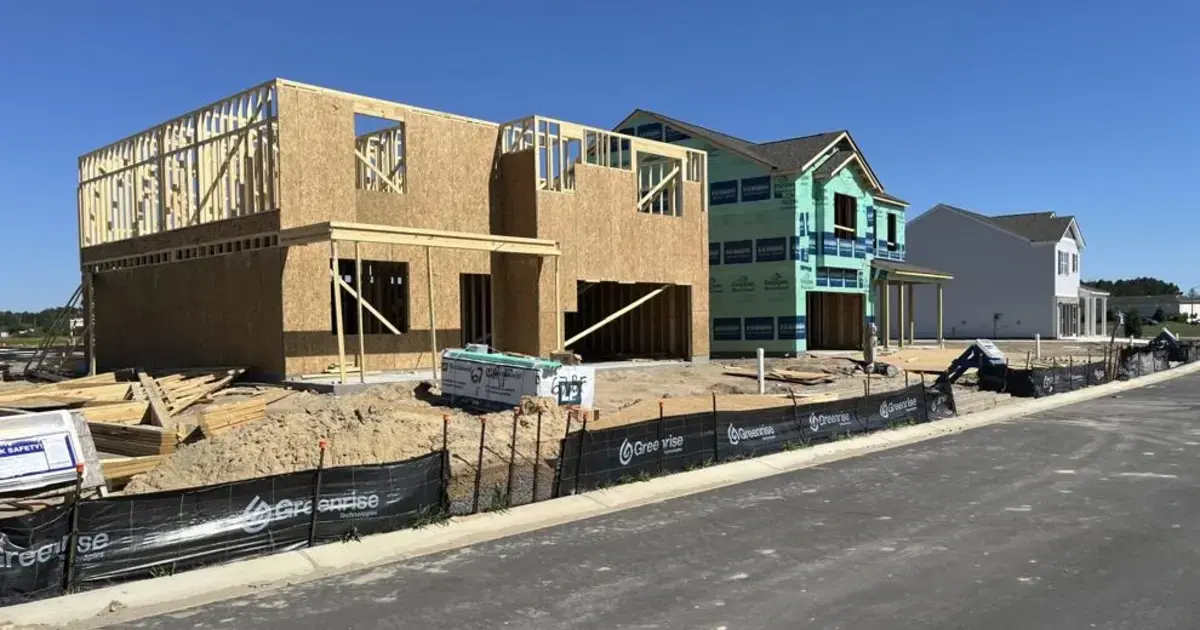
(The Center Square) – Oregon’s housing shortage is exacerbated by restrictive Construction Defect Liability laws worsen, according to the Common Sense Institute.
The state needs over 550,000 new housing units to meet its projected population growth over the next 20 years and already has 65,819 fewer housing units than it needs, the report said.
Notably, the state’s annual condominium development has fallen dramatically. It built just 309 new condo units last year, down 92% from 2006 when 4,199 were built, despite condos ($341,000) being, on average, much cheaper than single-family homes ($552,460), according to the report.
Common Sense Institute contests that if the state had more lax CDL laws, it would see more affordable home construction, including more condo units.
CDL laws hold contractors, developers, and builders liable for defects during or after construction.
“These laws, by providing an implied warranty, are designed to protect property owners by ensuring accountability for construction flaws, including poor workmanship, the use of substandard materials, or failure to adhere to building codes,” the report said.
Here are some examples of the state’s CDL laws, according to the report:
- Statute of Repose: This 10-year period begins with the substantial completion of the construction project. It sets a final deadline by which any claims related to construction defects must be filed. After 10 years, property owners can no longer file claims, even if the defect is discovered afterward. The statute of repose provides certainty by capping the total timeframe in which claims can be brought, regardless of when the defect becomes apparent.
- Statute of Limitations: The statute of limitations in Oregon provides property owners with up to 6 years to file a lawsuit after a defect is discovered, or reasonably should have been discovered. However, this 6-year period is subject to the 10-year statute of repose, which sets a hard deadline for filing claims. No claims can be made after 10 years from the substantial completion of the construction, regardless of when the defect was discovered.[JR3]
- 2-Year Discovery Rule (Negligence Claims): For negligence claims (e.g., faulty construction that causes damage), Oregon law applies a 2-year discovery rule. This means property owners have 2 years to file a lawsuit after discovering a defect or when they reasonably should have discovered it. However, like other claims, the discovery rule is subject to the 10-year statute of repose.
However, other western states like Colorado, Washington, and Nevada have a six-year statute of repose rather than 10 years. It is a reform Common Sense Institute supports in Oregon.
“This shorter timeframe helps reduce the long-term liability risks faced by developers, fostering more condo development by lowering barriers to new projects,” the report said.
Plus, Colorado requires informed consent from at least half of an HOA’s members before a defect-related lawsuit can proceed. That is also something Common Sense Institute supports.
“This would help ensure that litigation is pursued only when it has broad community support, helping to prevent unnecessary lawsuits that could deter developers from future projects,” the report said.
Additionally, Common Sense Institute supports a statewide construction quality standard to ensure higher construction quality.
“Such a standard could serve as a ‘safe harbour’ for developers who adhere to specific, predefined building practices,” the report said. “By meeting these standards, developers may gain legal protections against certain types of construction defect claims, potentially reducing the risks associated with condominium development and encouraging more housing projects across the state.”
Common Sense Institute also thinks the state should distinguish between cosmetic defects like bubbling paint and minor nail pops in drywall with tiered timeframes, giving shorter windows for addressing cosmetic defects while keeping longer ones in place for serious structural issues.
“This approach would recognize the importance of addressing both cosmetic and structural defects while aiming to create a legal framework that is fair and efficient,” the report said. “By balancing these timelines effectively, the system could protect homeowners while reducing the potential for prolonged liability for developers regarding minor issues.”
Additionally, the Common Sense Institute highlighted the link between homeownership and generational wealth.
“For most Oregonians, the most likely avenue for wealth generation is through homeownership,” the report said. “Relatively few households own profitable businesses or have large stock portfolios to rely upon. With the housing shortage having prevented many Oregonians from entering the market, wealth losses will be felt for years to come.”
Editor’s note: To read the full report go to the Common Sense Institute. https://www.commonsenseinstituteus.org/oregon/research/housing-and-our-community/oregons-construction-defect-liability-laws-a-barrier-to-homeownership#_msocom_3
Tom Joyce is a contributing writer for The Center Square.
